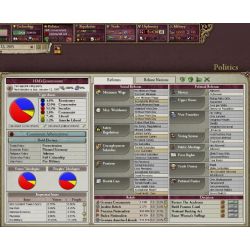

Enabling legislation was passed by the Parliament of New South Wales, and Victoria was formally created a separate colony of the United Kingdom on 1 July 1851. On 5 August 1850, the Parliament of the United Kingdom passed the Australian Colonies Government Act which made provision for the separation of Victoria from New South Wales. Prior to 1851 the area of Australia now known as Victoria was part of the colony of New South Wales and was administered by the Government of New South Wales in Sydney. Sections of the structure's outer walls have gradually been replaced over time. įurther construction was undertaken throughout the 1970s to make "temporary" offices for members of Parliament, although these were not modernised until further works began in 2015. The first major works were conducted in the 1930s, using a 50,000 pound sterling contribution from the Australian federal government paid in gratitude for the use of the building. The building has undergone significant renovations since its initial construction as it has been expanded, repaired and restored over time.

Parliament has sat at Parliament House, Melbourne since 1856, with the exception of the period 1901–1927, when Parliament House was used by the Federal Parliament and the Parliament of Victoria sat at the Royal Exhibition Building. See also: History of Victoria and History of Australia Location Daniel Andrews has been the Premier since 2014. The Labor Party has held a majority in the Assembly since the 2014 election and formed government. Victorians do not directly elect the Premier, and the leader of the majority party is appointed Premier by the Governor. The leader of the governing party or parties is the Premier, the most senior elected member of Victoria's executive government. Government is formed by the party or parties who command confidence and supply within the Assembly. The parliament is also vested with other powers, such as the means to investigate matters, conduct research and summon witnesses. Similarly, the Supreme Court of Victoria provides judicial oversight of Parliament and is vested with equal power. Its power is further limited by the ability for the federal government to override it in some circumstances, subject to the Australian Constitution. The Parliament may make laws for any matter within Victoria, subject to the Victorian Constitution. The parliament's functions and processes have evolved over time, undergoing significant changes as Victoria changed from an independent colony to a state within the federated Australia. Majorities in the Legislative Council are rare, so the government of the day must negotiate with other parties to pass much of its legislative agenda. The Council is described as a house of review. Victoria has compulsory voting and uses instant-runoff voting in single-member seats for the Legislative Assembly, and single transferable vote in multi-member seats for the proportionally represented Legislative Council. The two Houses of Parliament have 128 members in total, 88 in the Legislative Assembly (lower house) and 40 in the Legislative Council (upper house). The current Parliament was elected on 24 November 2018, sworn in on 19 December 2018 and is the 59th parliament in Victoria. The parliament meets at Parliament House in the state capital Melbourne. It has a fused executive drawn from members of both chambers. It consists of the Queen, represented by the Governor of Victoria, the Legislative Assembly and the Legislative Council. The Parliament of Victoria is the bicameral legislature of the Australian state of Victoria that follows a Westminster-derived parliamentary system.


 0 kommentar(er)
0 kommentar(er)
